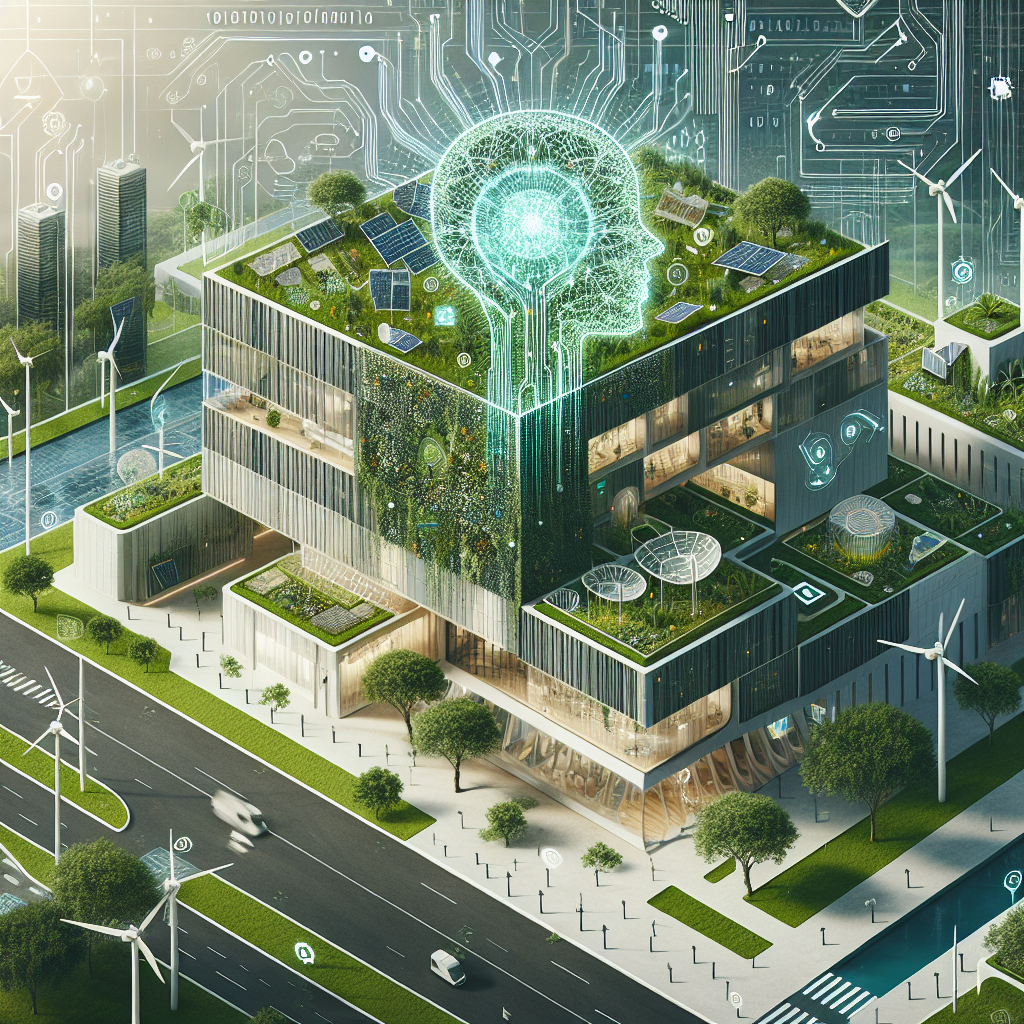In recent years, the architecture industry has seen a significant shift towards sustainability and environmentally-friendly practices. With the increasing awareness of climate change and the need to reduce our carbon footprint, architects and designers are looking for innovative ways to create buildings that not only meet the needs of their users but also have a minimal impact on the environment. One of the key technologies that is driving this shift towards sustainable architecture is artificial intelligence (AI).
AI has the potential to revolutionize the way buildings are designed, constructed, and operated. By harnessing the power of AI, architects can optimize building performance, improve energy efficiency, and reduce waste. From designing more efficient building layouts to optimizing HVAC systems, AI can help architects make informed decisions that will have a positive impact on the environment.
One of the key ways AI is being used in sustainable architecture is through building energy modeling. Energy modeling is the process of simulating a building’s energy use to identify areas where energy efficiency can be improved. By using AI algorithms to analyze data from sensors and building management systems, architects can identify patterns and trends that can help them optimize energy use and reduce waste.
Another way AI is being used in sustainable architecture is through generative design. Generative design is a process where AI algorithms are used to explore numerous design options and find the most efficient and sustainable solution. By inputting parameters such as building materials, site conditions, and energy goals, architects can use AI to generate thousands of design options in a fraction of the time it would take to do manually.
AI can also be used to optimize building systems, such as heating, ventilation, and air conditioning (HVAC) systems. By analyzing data from sensors and weather forecasts, AI algorithms can adjust building systems in real-time to maximize energy efficiency and comfort for building occupants. This can help reduce energy costs and improve indoor air quality, creating a healthier and more sustainable building environment.
In addition to design and operation, AI can also be used in the construction phase of a building project. By using drones, robots, and 3D printing technology, AI can help streamline the construction process, reduce waste, and improve safety on construction sites. By using AI to monitor construction progress and identify potential issues, architects can ensure that their projects are completed on time and within budget.
Overall, AI has the potential to revolutionize the way buildings are designed, constructed, and operated, leading to more sustainable and environmentally-friendly architecture. By harnessing the power of AI, architects can make informed decisions that will have a positive impact on the environment and create buildings that are healthier and more efficient for their users.
FAQs:
Q: How can AI help architects design more sustainable buildings?
A: AI can help architects design more sustainable buildings by analyzing data, optimizing building systems, and generating efficient design options. By using AI algorithms, architects can identify areas where energy efficiency can be improved, reduce waste, and create buildings that have a minimal impact on the environment.
Q: Can AI help reduce energy costs in buildings?
A: Yes, AI can help reduce energy costs in buildings by optimizing building systems, such as HVAC systems, and identifying areas where energy efficiency can be improved. By using AI to analyze data and make informed decisions, architects can reduce energy costs and create more sustainable buildings.
Q: How can AI be used in the construction phase of a building project?
A: AI can be used in the construction phase of a building project by using drones, robots, and 3D printing technology to streamline the construction process, reduce waste, and improve safety on construction sites. By using AI to monitor construction progress and identify potential issues, architects can ensure that their projects are completed on time and within budget.

